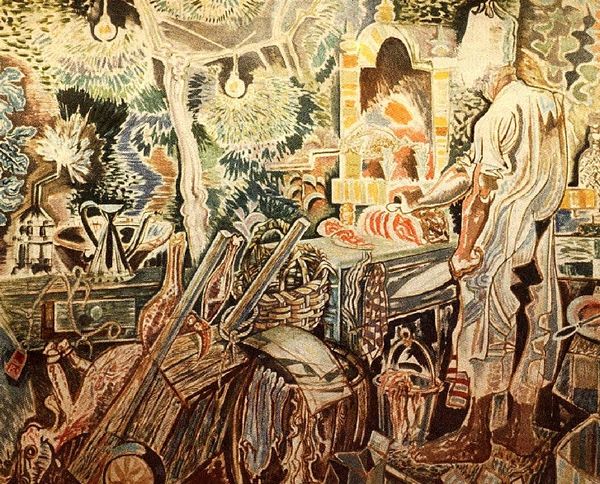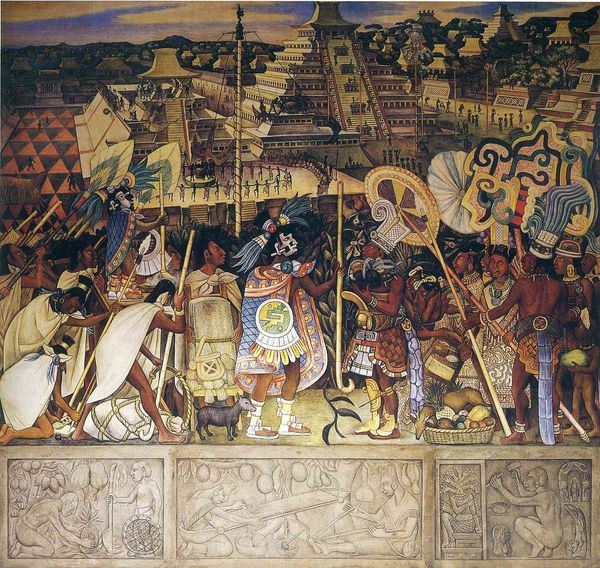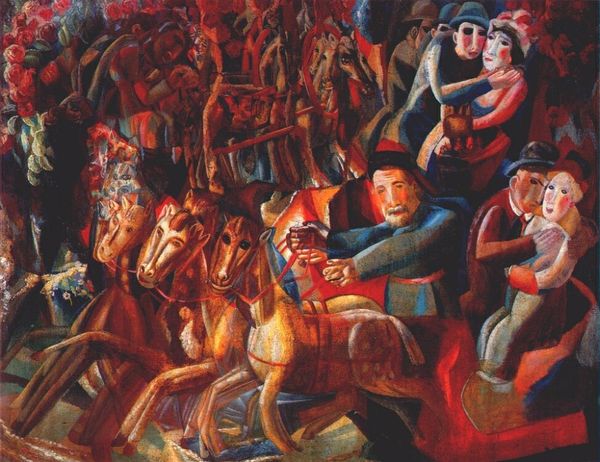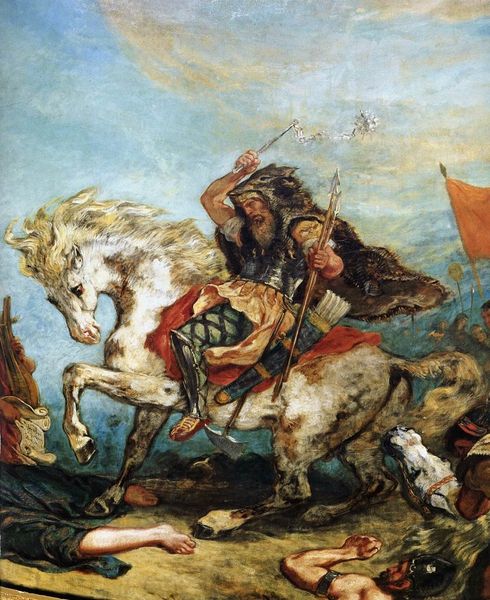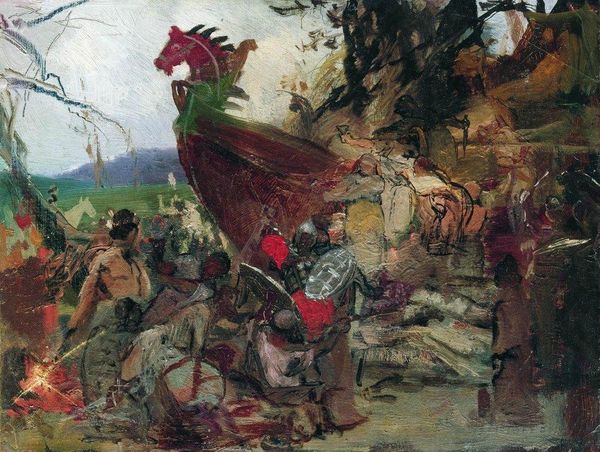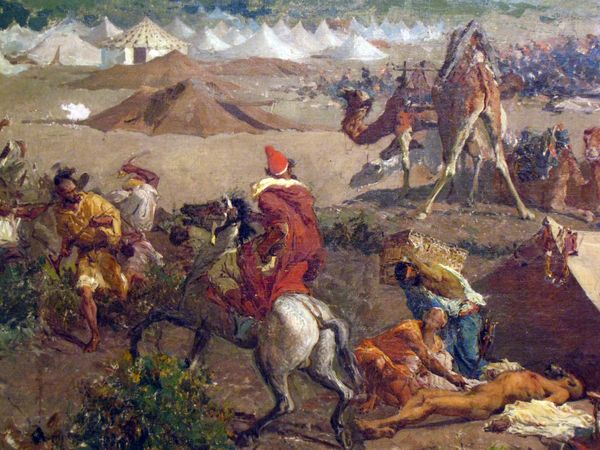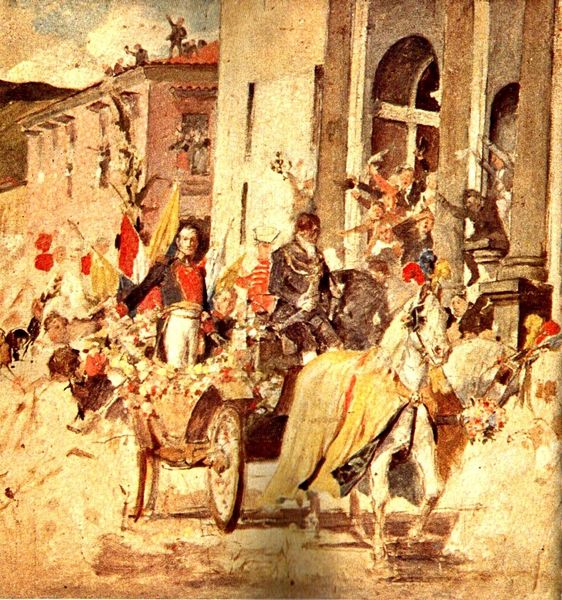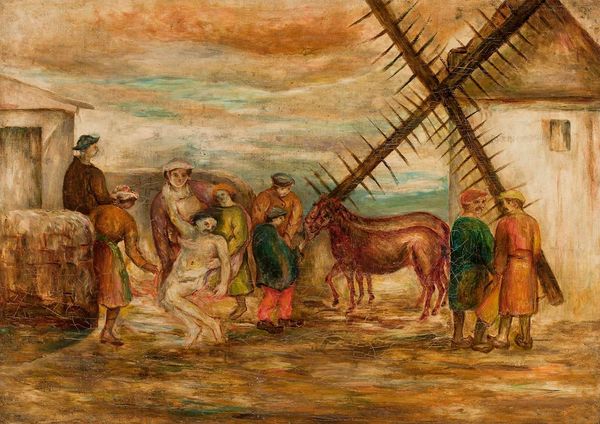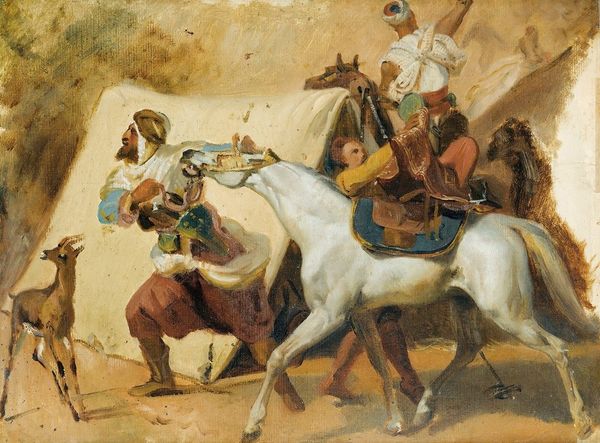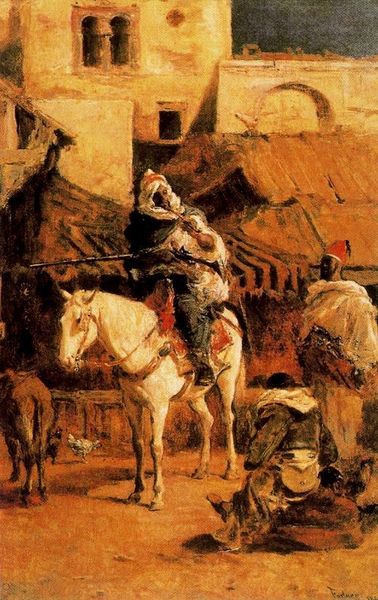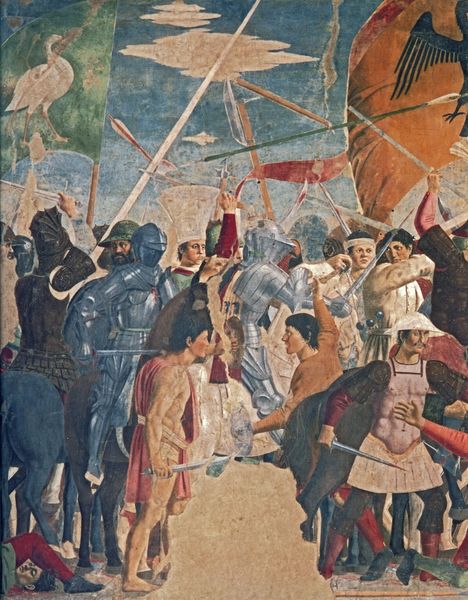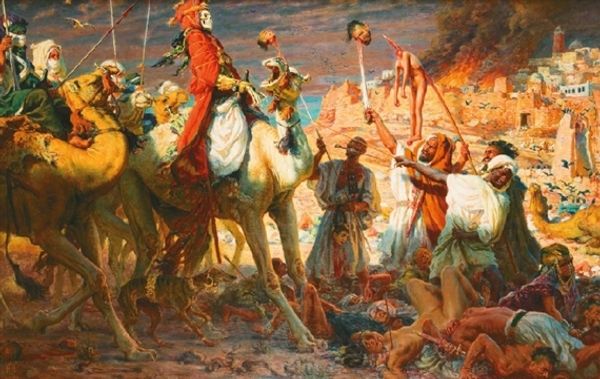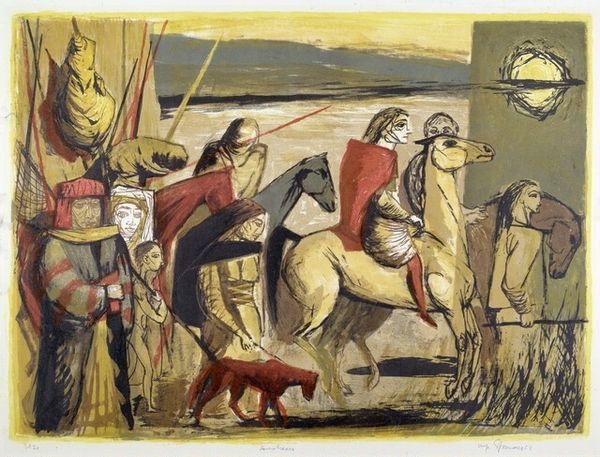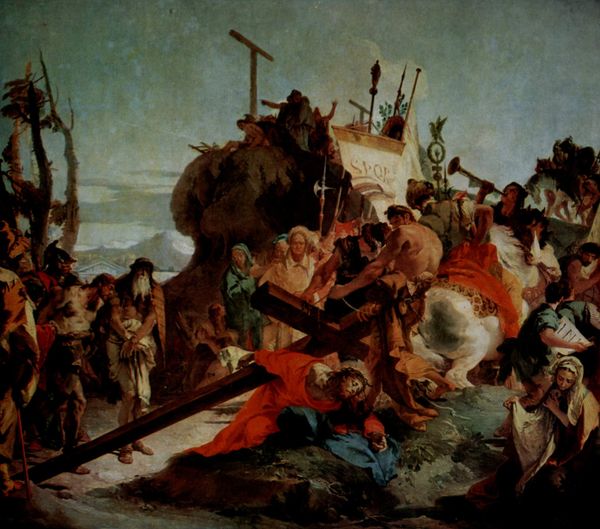
painting
#
narrative-art
#
painting
#
figuration
#
handmade artwork painting
#
oil painting
#
modernism
#
watercolor
Copyright: Fair Use
Curator: Look at the dynamism in this piece. We're standing before "Bayanihan," painted in 1962 by Botong Francisco. The collective spirit practically leaps off the surface. Editor: It certainly does. The energy is palpable, almost frantic. It looks like organized chaos—but is that water color and oil painting combined? Interesting medium use here! Curator: Indeed! Francisco often blended techniques, pushing the boundaries of traditional mural-making. What strikes me is the depiction of labor. Each person contributes to a collective effort. It highlights the material exchange and human capital involved in physically moving a house. Look at their strained expressions. Editor: And it speaks volumes about community bonds. Francisco is engaging with history by portraying "bayanihan"—the practice of communal unity. But to what extent does he portray reality here? How might this image influence a specific vision about Filipinos? Is there any link between nationalism, collective effort, and this specific genre of paintings? Curator: That's a valid point, given the political climate of the time, with a rising sense of national identity. It definitely plays into constructing an idea, an ideal. Yet, when you consider the scale of a traditional "lipat bahay," moving a house, it emphasizes how labor manifests physically in cultural traditions, it transforms what could be a single-family task into collective ownership. Editor: Still, I can’t help but wonder about the politics behind such imagery. I mean, look at how the subjects are positioned –are they idealized representations or an attempt at realistically documenting an old practice? And does idealizing it, in the art world, also somewhat alter and commodify a local practice? Curator: Well, consider the artist's background. Francisco wasn't an outsider. He lived amongst the people he painted. Therefore, “Bayanihan,” might actually be a celebration of localized materials, techniques and collaborative making that goes beyond any potential idealizations. Editor: I see your point, focusing on the agency of collaborative work and highlighting the values behind "bayanihan". Curator: Exactly! Francisco reminds us about collective traditions. Editor: This gives me plenty to ponder concerning art, social practices, and historical narratives.
Comments
No comments
Be the first to comment and join the conversation on the ultimate creative platform.
